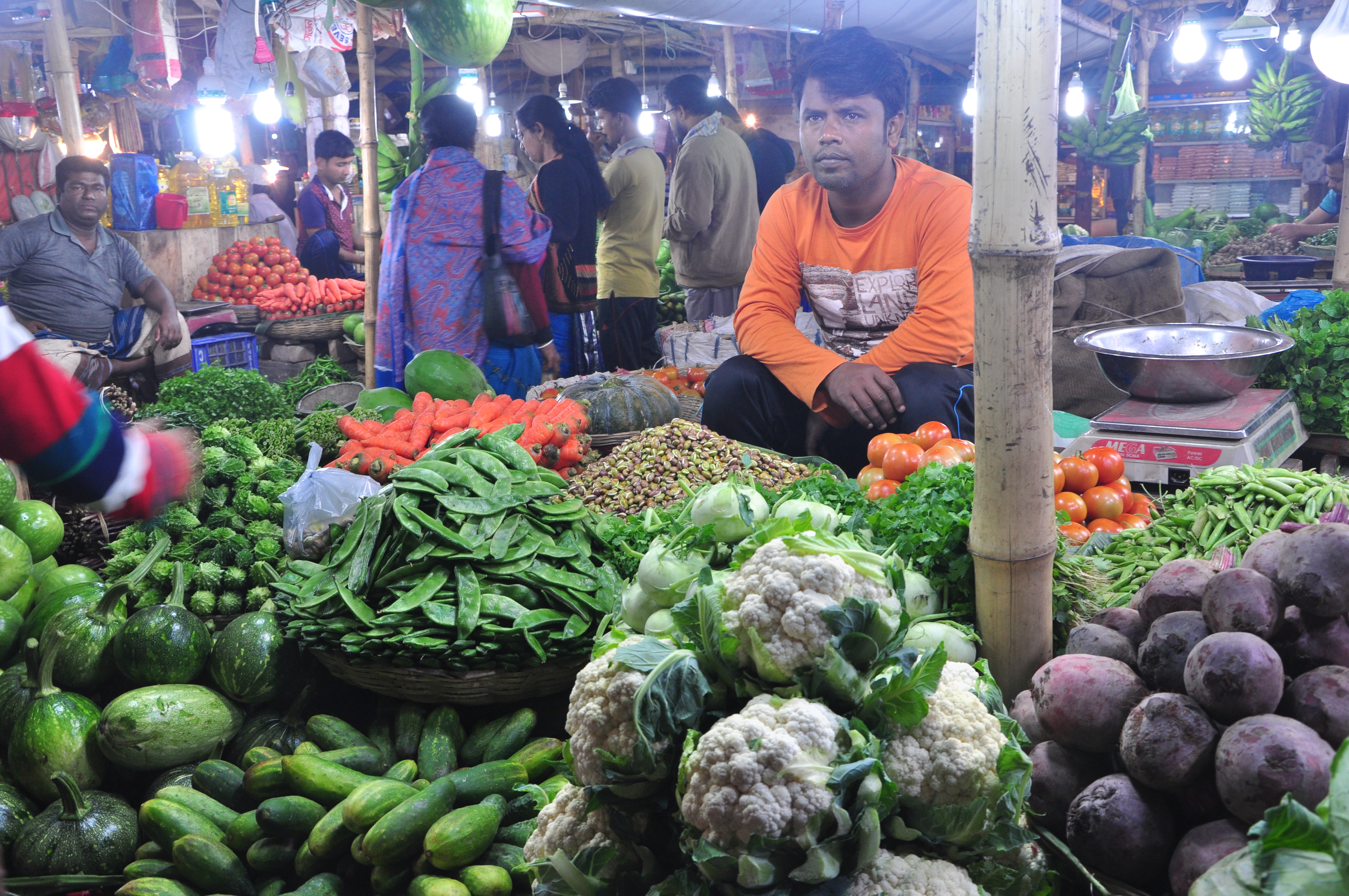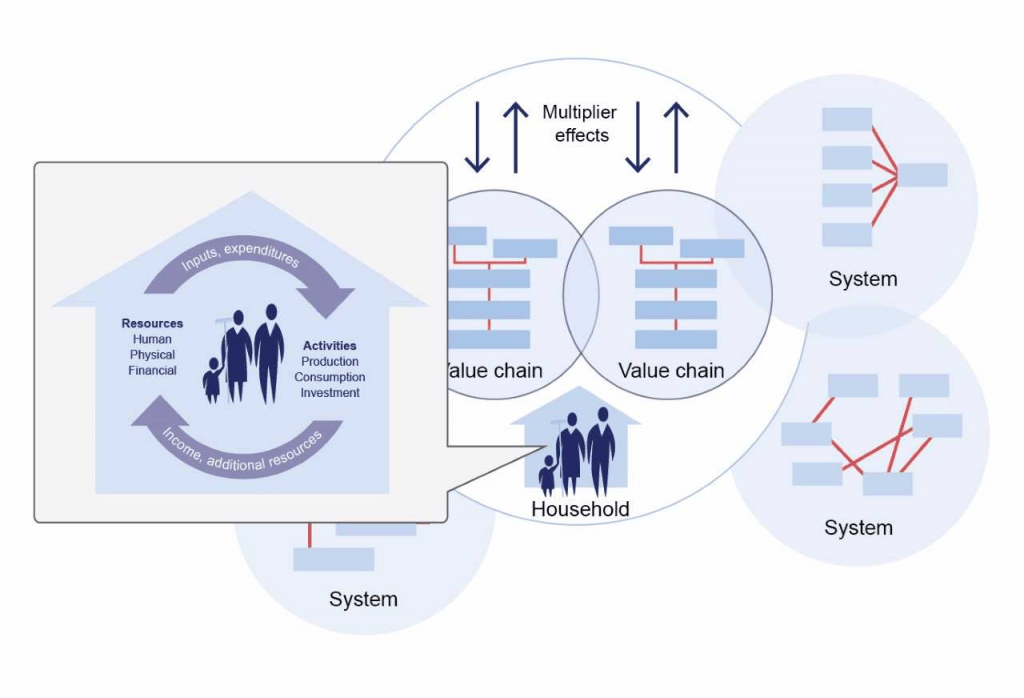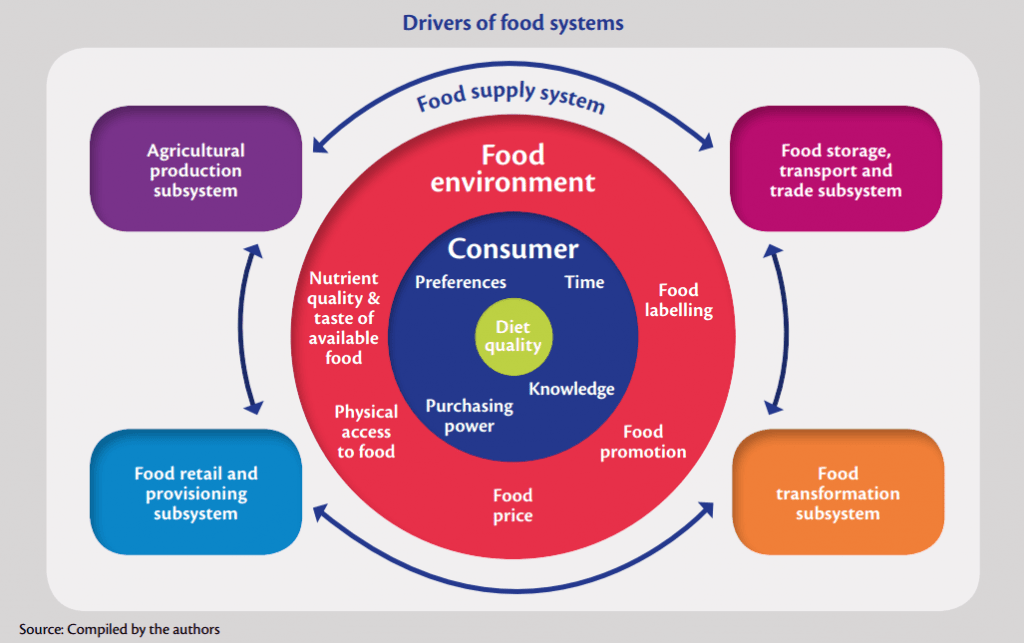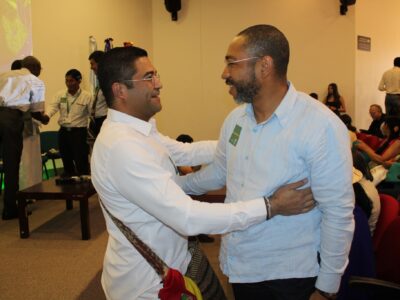
If you work in international development, you have probably heard a lot about food systems lately. The buzz about food systems has been growing. And as a senior technical director for nutrition at ACDI/VOCA, it has been on the top of my mind, too. In October, I attended the International Union of Nutritional Sciences’ International Congress of Nutrition in Buenos Aires, where thousands of nutrition experts came together to discuss how we can achieve food security, with food systems being a common theme in many of the presentations.
In Buenos Aires, these experts spoke about a common framework for food systems laid out by the High Level Panel of Experts on Food Security and Nutrition (HLPE). However, I noticed no one was talking about how food systems relate to other systems contributing to food and nutrition security.
Globally, nutritionists work to reduce malnutrition, and that often means working within and across different systems, such as health, education, and agriculture. As a nutritionist working for an economic development organization focused on agriculture, I see nutrition through a market systems lens. But before we dive into what that means for food systems, let’s start with some definitions.
A market system is “a dynamic space—incorporating resources, roles, relationships, rules and results—in which public and private actors collaborate, coordinate, and compete for the production, distribution, and consumption of goods and services.” – Ruth Campbell, former program director for ACDI/VOCA’s USAID-funded Leveraging Economic Opportunities project

“A food system gathers all the elements (environment, people, inputs, processes, infrastructures, institutions, etc.) and activities that relate to the production, processing, distribution, preparation and consumption of food, and the outputs of these activities, including socio-economic and environmental outcomes.” – HLPE report

Source: Global Panel on Agriculture and Food Systems for Nutrition’s Food Systems and Diets: Facing the Challenges of the 21st Century report
These approaches involve many of the same actors and functions, but aim toward different outcomes. By understanding what they have in common, it may be possible to improve how both systems function.
For example, an inclusive market system approach to development focuses on engaging households within competitive markets to transition households out of poverty, often with the hopes of improving nutrition and health. A food systems approach looks at the food environment to improve the conditions driving individual diet quality. Both approaches work with similar systems actors, such as input suppliers, smallholder farmers, traders, food processors, consumers, local and national governments, and civil society.
At the same time, interventions are often developed with only one of these major outcomes: economic opportunity or nutrition. These potentially conflicting outcomes can lead to a misalignment of incentives for system actors as well as competing priorities for development partners. This conflict may also force households to prioritize either income or health. As implementers of development projects, we need to find levers to make both systems competitive, inclusive, and resilient for households to experience economic and nutrition outcomes.
Donors like USAID recognize the value of leveraging common ground between the two approaches and applying it to projects. I had the chance to see an inclusive market system in action while working on ACDI/VOCA’s Livestock Production for Improved Nutrition project, under Feed the Future in Bangladesh. The project uses a market facilitation approach to pull people out of poverty by stimulating market drivers for the dairy industry, while increasing household milk and meat consumption.
To understand the drivers and barriers to milk and meat consumption, we conducted a behavioral barrier analysis. This formative research helped us understand the factors that influence individual consumer decisions. Our team discovered that a need existed for improved processing and storage to increase market access to milk and meat. Moving forward, we will continue to adapt our project using a market system approach to improve the food environment and individual nutrition status.
As part of our continual learning process, ACDI/VOCA and our affiliate, Agribusiness Systems International, are hosting a webinar on February 22, 2018, on leveraging market and food system approaches to improve nutrition outcomes. View the Save the Date announcement for more details.
We would love to hear your thoughts and experiences working in the nexus of market systems and food systems as we prepare for this vibrant discussion.
Please join the discussion and fill out this survey.
- How can these approaches come together to foster market and food environments that improve both economic and nutrition outcomes for households?
- Where have you seen nutrition-sensitive interventions successfully integrated into an inclusive market systems development program?
- What are the levers for change in the food system beyond household behaviors? Who are the most influential actors?
- What are the underlying economic factors that affect nutrition choices?








